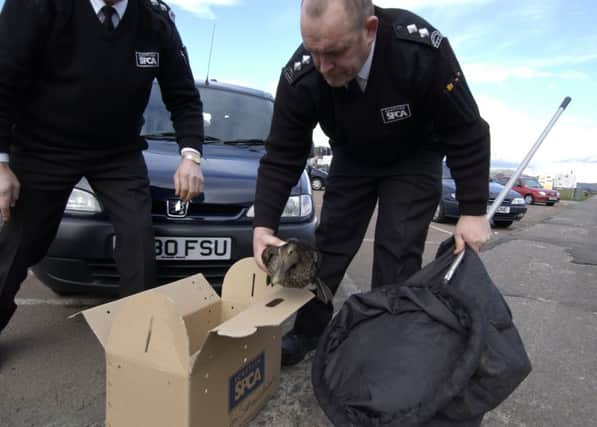No reason for do-little response on animal welfare


We have spent 175 years rescuing and rehoming animals in Scotland: reflecting on our past and looking to the future
This year marks the Scottish SPCA’s 175th anniversary, a milestone every one of our supporters, staff and volunteers can be incredibly proud of.
Advertisement
Hide AdAdvertisement
Hide AdIt is amazing to think of how many animals we will have helped and saved since December 1839.
The RSPCA had been formed as a separate charity 15 years earlier in England and Wales and our founders were determined that animals in Scotland should also be protected from cruelty.
At the time there were no laws against being cruel to animals in Scotland. However, with our encouragement, this changed with the passing of the Scottish Act of 1850, which made it an offence to mistreat or overwork animals and banned bull, dog and all other forms of animal fighting.
There was a key difference between the Scottish Act and similar legislation south of the border, with Scottish SPCA inspectors given enforcement authority. Today, even though we receive no government funding, we remain the only animal welfare organisation in Europe with this status.
Animal welfare in Scotland has of course taken great strides since the mid-nineteenth century. The Protection of Animals Act (Scotland) of 1912 and the Animal Health and Welfare Act (Scotland) of 2006 were landmarks which afforded animals greater protection.
These Acts were also indications of wider society’s progress as our attitudes towards animals and understanding of their needs continued to evolve. Yet there is still so much more to achieve.
Each February we release our key statistics from the previous year. This includes the number of investigations into alleged animal cruelty and neglect carried out by our inspectors, the level of calls our animal helpline received and how many rescue pets we rehomed.
Understandably, our figures are often used by the media as a snapshot in time to measure the extent to which cruelty to animals exists in Scotland.
Advertisement
Hide AdAdvertisement
Hide AdThis week we revealed calls to our helpline increased to more than 228,000 in 2013, a rise of more than 56 per cent over just five years. The 20,111 investigations we conducted and the 6,563 pets we rehomed were also record highs. As we reflect on the past 175 years and look to the future, we must consider why this was the case.
Is cruelty to animals in Scotland increasing? We can’t be certain as we know more people than ever before are aware of who we are and how we can help, which means we are possibly uncovering cases not reported in previous years.
What we can be sure of is the suffering caused to animals in modern day Scotland is still shameful and our role is as vital today as it was in 1839.
We also know that while many of the cases we deal with involve horrific suffering, the majority are caused by ignorance rather than wilful and mindless cruelty. This is why preventing cruelty to animals through education is at the very heart of our work.
Our free Prevention through Education programme, which reached more than 300,000 children last year, has been very successful and will have a fundamental impact in Scotland for generations to come.
In fact, the results have been immediate, with reports of children being involved in cruelty to animals decreasing 16 per cent since 2010 and the number of calls we receive from adults who have been alerted by children to animals in need of our help rising 545 per cent over the same period.
These are very encouraging signs for the future and our vision of a Scotland where every animal is treated with care and compassion. Until then, we will continue our work. Over the past six years we have invested over £10 million in our rescue and rehoming centres across Scotland and we are extending our centre in Glasgow, known locally as the Glasgow Dog and Cat Home, at a cost of a further £4.8m. We also now have more inspectors and animal rescue officers on the frontlines. This investment has been essential as the pressures we face continue to rapidly increase.
Our 174th year was our busiest ever and we are ready for our 175th anniversary year to be even more demanding. As long as animals in Scotland need us, we and our supporters intend to be here for them.
• Mike Flynn MBE is Chief Superintendent of Scottish SPCA www.scottishspca.org
SEE ALSO